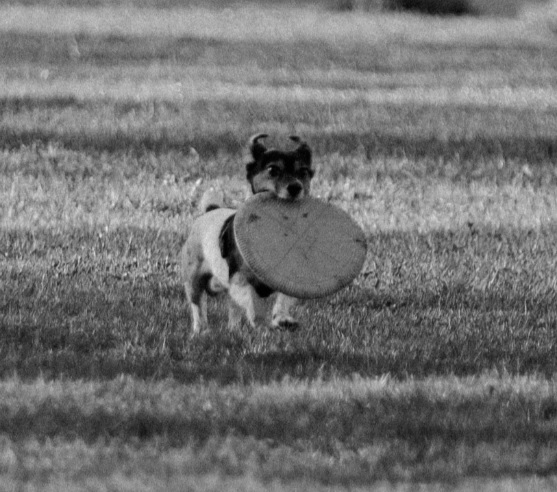How to teach deaf dog sign language
Teaching sign language to your deaf dog is an effective way of both communicating with and training them. Although initially it might appear daunting, with patience, consistency, and positive reinforcement you’re bound to succeed at teaching him/her various sign language commands. We explore techniques and strategies you can employ when teaching sign language to your deaf pup in this comprehensive guide.
Before Beginning Deaf Dog Training:
Before you embark on training your deaf pup, it’s essential that you become acquainted with sign language’s fundamental principles. Sign language uses hand gestures and visual cues to convey meaning; keep clear hand movements close to where your deaf dog can see them so as not to obscure their vision of them; each sign represents either a command or action taken by their master.
Establish a Communication System:
Create an easy to remember set of signs you’ll use consistently when communicating with your deaf dog, such as simple gestures that make the most sense to him or her. Consistency helps prevent confusion while encouraging him or her to respond appropriately when given commands.
Focus on Visual Cues: Since your dog cannot hear verbal cues, visual cues play an integral role in his or her training. Use exaggerated facial expressions and body language to convey your intentions or emotions – this will enable him or her to interpret signals more readily and understand what’s expected of them.
Positive Reinforcement:
For any form of training to succeed with deaf dogs, positive reinforcement must be the focus. Reward your deaf pup when he or she responds correctly to signs or commands; use rewards like treats, praise and play as motivation and reinforcement of good behavior. Whenever your deaf pet responds correctly with something desired such as signing or commands by offering treats as soon as they respond; do this to strengthen associations between each sign or command and desired actions taken from you as an owner and desired behaviors in their mind!
Start With Basic Commands:
It is crucial that deaf dogs learn basic commands essential for their wellbeing and safety, starting with some fundamental commands like these:
“Sit“: To encourage your dog to sit, hold a treat above their nose and move your hand up, which should naturally prompt them. Use the treat as guidance into sitting position while signing “sit” using downward hand motion with palm facing down; repeat while also offering treats and repeat the sign until your pup complies. Reward them as soon as they sit!
“Stay“: To do a stay training session successfully with your dog, use an open palm facing their face while stretching your arm out in front of you and holding out an extended palm in an inverted stop position to signal “stay”. Gradually increase the duration of this stay training session from seconds up until several minutes have been reached and reward your pup when maintaining this pose!
“Come“: To encourage your pet to come towards you, use an upswipe with both hands with palms facing upwards, then bring them towards you while signing the word “come”. Sign “come” by bringing both palms together with palms facing away before spreading them apart again as the word itself – using enthusiastic body language will encourage him or her to approach and reward when they arrive!
“Down“: Begin by tempting your pup into the down position using treats, then sign the word “down” by moving your palm downward. As their body lowers into it, reinforce the sign. Reward them as soon as they are completely down!
Adjust Training Techniques: Your deaf dog cannot hear verbal praise or cues; to train it effectively you’ll need to adapt training methods in order to focus on visual signals and physical rewards instead. Use hand signals, facial expressions and body movements in order to reinforce desired behaviors.
Once Your Deaf Dog Has Mastered Basic Commands:
Once your deaf dog has learned basic commands, gradually add new signs for more advanced training. Do it step-by-step so as your deaf canine becomes familiar and comfortable with sign language.
Consistency and Repetition: Both consistency and repetition are keys to successful sign language training for your dog. By regularly repeating signs and commands in different environments and situations, this will enable him/her to generalize them across contexts more readily and understand them despite disruptions or change.
Seek Professional Guidance: If you are having difficulty training your deaf dog on your own, seeking assistance from an expert dog trainer experienced with deaf canines can provide essential guidance while tailoring training methods specifically to his/her specific needs – they also can assist in helping overcome any hurdles along the way!
Bonding and Patience: Remember that creating a meaningful bond between yourself and a deaf dog takes time and dedication. Put an emphasis on positive interactions, engaging in enjoyable activities together, and making training sessions enjoyable for both of you. Celebrate small victories along the way while remaining patient as your dog progresses toward independence.
Teaching sign language to your deaf dog is an enriching and fulfilling experience, strengthening both of your relationships. Through visual cues, positive reinforcement, and consistent training techniques you can effectively communicate with and assist them as they thrive – take pleasure in this rewarding adventure as together you explore this vibrant realm of sign language!


